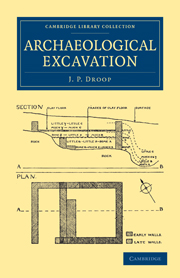Summary
THE USE OF THE DUMPY LEVEL
The Dumpy Level is a revolving telescope with an attached spirit level set up on a tripod and made perfectly horizontal by means of screws. A board marked in metres is held vertically on the spot of which the height is to be ascertained, and the reading is taken through the telescope, the figure read being that cut by the hair stretched horizontally across the eyepiece, which for some reason unknown to me has no reverser so that the figures are read upside down, a trick however to which the eye soon becomes accustomed. The figure thus obtained is the difference in height between the chosen spot and the telescope in that position. Clearly before the reading can have any value the height of the telescope must be found by taking a reading with the board placed on a known fixed mark within range of the operations, to which mark it is best to give an arbitrary height of say ioo m. Then a simple sum in subtraction is all that is necessary: say the reading on the mark A, as in Fig. 4, is 3 m. and the readings on the chosen spots C and D are 4 m. and 4.25 m. respectively, C and D are 1 m. and 1·25 m. respectively below A, and have therefore the arbitrary heights of 99 m. and 98·75 m.
- Type
- Chapter
- Information
- Archaeological Excavation , pp. 65 - 68Publisher: Cambridge University PressPrint publication year: 2010
- 1
- Cited by



